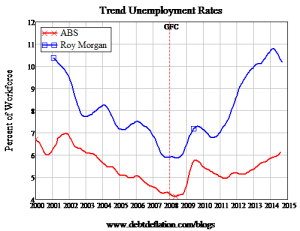
I graduated from my first degree more than a few years ago. (No I am not telling). Before I had left, I had posted (that’s snail mail – it involves something called a “Post Office”) 200 applications for work in the last couple of months of my degree. It was assisted by a program I wrote in “Basic” to generate letters and accessing a Database I developed and populated (OK I admit it was pre-mail merge MS Word days) that I wrote on the University HP4000 mainframe. (If you’re a real geek you have figured out my age by now) While I can assure you I did not get 200 replies – because many employers just didn’t bother writing back – I did although become familiar with the three forms of rejection letters. Employers (who did bother to write back) tended to generate relatively uniform replies. If any of the early paragraphs began with “I regret …”, “Unfortunately …” or “Due to Circumstances …”; I didn’t bother reading the rest. I didn’t get a single job that way, not a single interview. I had been in the workforce working during all school holidays and even while managing University classes, pretty consistently since I was 14 years old. I had been working for a range of employers (so it was not like I had no experience). Admittedly sometimes doing pretty menial work, not unlike the stuff you would probably get in the current “work for the dole” programs. At least I got a decent pay relative to the era, which is not the case for “work for the dole” today. My first job out of Uni was at another University where a family friend got me an interview. I was very, very lucky to have someone who would go to bat for me. That is how I got started post-degree, as nobody would give me a job off my reconnaissance, despite years of work experience, my obvious computer skills and a Bachelor’s degree. Back then unemployment was low, the economy good, jobs available and lunatics didn’t run the country.
ABS v Roy Morgan statistical measurements

These days, Government Stats have unemployment rising at values more than 6% although if you look at statistics produced by Roy Morgan, they have values of more than 10%. Roy Morgan obtains unemployment estimates by surveying an Australia-wide cross section by face-to-face interviews. A person is classified as unemployed if they are looking for work, no matter when. The results are not seasonally adjusted and provide an accurate measure of monthly unemployment estimates in Australia. The ABS classifies a person as employed if, when surveyed (interviews over phone held each month for eight months, with one-eighth of the sample being replaced each month), a person worked for one hour or more during the reference week for pay, profit, commission or payment in kind, or even if a person worked for one hour or more without pay in a family business or on a farm. The Australian Bureau of Statistics (ABS) unemployment estimates are also seasonally adjusted. Note that with the ABS statistic reduces the real numbers, by deeming anyone who has “worked” (even sometimes for no money) for at least 1 hour per week as “employed”. Even unpaid family workers at a work place count as “employed”. Australia adopted the principle that only one hour of work for unpaid family workers was required to be counted as employed, while in the US of A, by comparison, unpaid family workers have to work more than 15 hours in the reference week to be counted as employed. Make no mistake; the government is interested in making that unemployment figure as small as possible and the available jobs numbers as large as possible.
The difference between the data created by both methods is huge as you can see by the Graph here. The Media always (practically without exception) quote the ABS statistics. It creates an impression that the unemployment situation is nowhere near as bad as it is. Regarding real numbers, taking, for example, April 2015’s Statistics from both sources. The ABS would tell you there were 769,000 people unemployed, which it says is 6.1% (seasonally adjusted to 6.2%). Roy Morgan would say – in that month – it was 1,309,000 people unemployed, or (10.4%). Worse still, Roy Morgan also measures Unemployed and Under-employed numbers and came up with a figure of 2,446,000 people or (19.4% of the workforce). If you want to know how many jobs there are available for over 2.4 million inhabitants to look for in Australia, you will need to read one of my posts below. (Spoiler Alert: It’s not a lot)
Change of Ministry but no change of result
However you measure it, the statistics on unemployment have not been near this high since Abbott was last in charge of the situation in the Howard Government. Then he was just Minister for Employment. His status has changed since then. Strangely his position of Prime Minister has resulted in a similar outcome in Australia’s employment. Perhaps it is a coincidence? I am sure the Conservatives amongst us would prefer we think so. Right!? I don’t fall into any of these statistics anymore, as I am part of around 17.2% of the Australian workforce that are self-employed. If you are curious about this struggling amorphous mass of people in the community, it equates to 2 million individuals in this country, who hope other businesses shell out work to independent contractors and for whom options of welfare benefits or a regular wage are a luxury. Nowadays, unemployment is high, the business confidence depressed, jobs are unavailable, and lunatics DO, run the country!